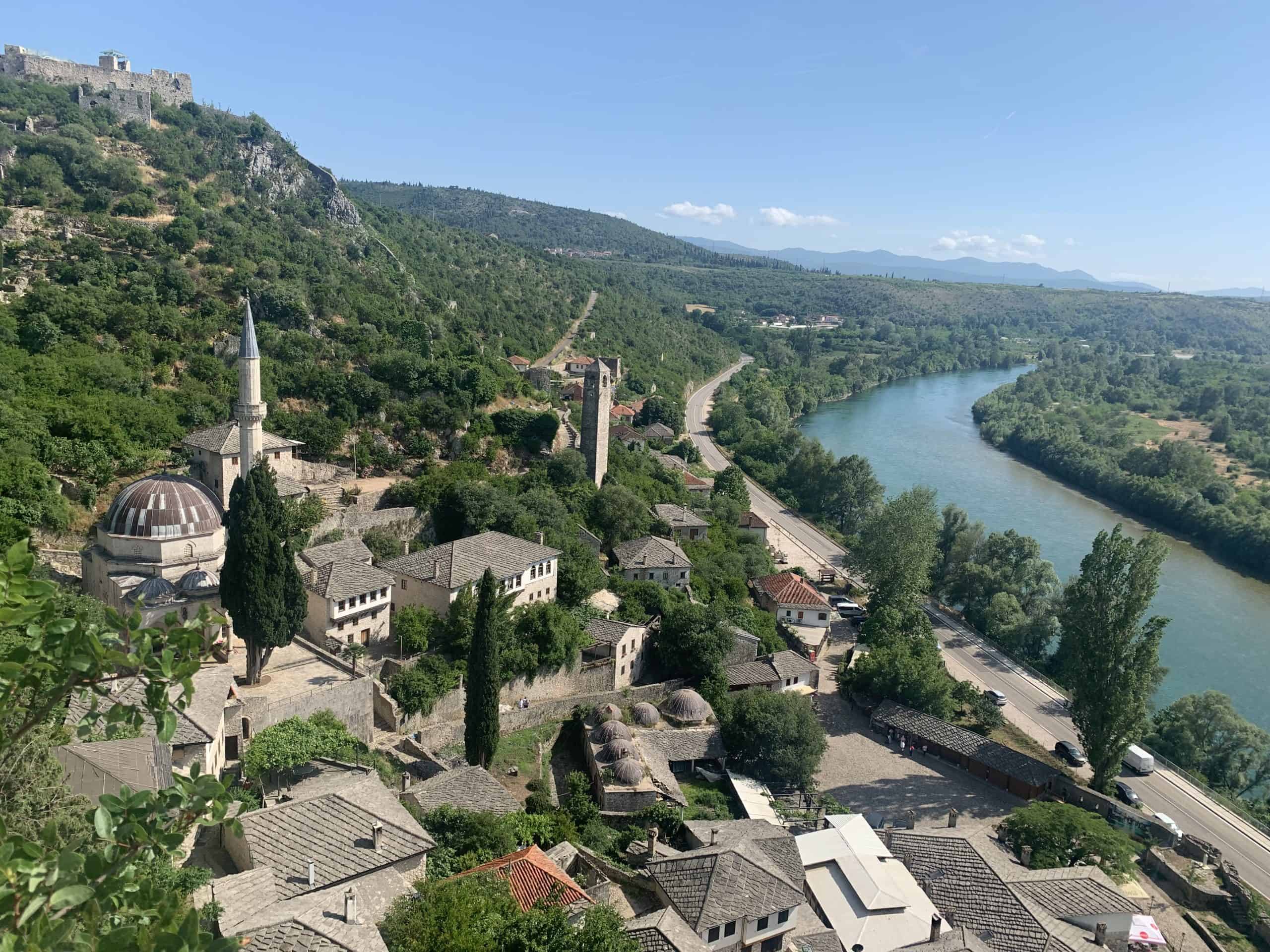
Herzegovina is the southern part of Bosnia and Herzegovina, bordering Croatia, Serbia and Montenegro. The main cities and attractions are Mostar, Počitelj, Blagaj Tekke, Kravice Waterfalls and Medjugorje.
Počitelj is a village in the south of Bosnia and Herzegovina about 10km from Mostar. It is a UNESCO site and boasts a long history as a fortified city playing a strategic role during the medieval period and also under the Austro-Hungarian period.
During the Ottoman occupation, however, the country developed and some of the buildings that characterize it were built such as mosques, Turkish baths and the clock tower. The current country is profoundly different from the original one. The Bosnian war has greatly damaged him. From the center of the village, some gray stone-paved roads climb up the mountain and lead to the Hadži Alija Mosque. The mosque has undergone deep and repeated restoration work. The last ones began in 2002 and restored the dome and minaret destroyed by the bombs of the war in 1993. Fortress overlooks the village and is the panoramic place par excellence from where you can admire the village and the surrounding valley.
Kravice Waterfalls are an authentic masterpiece of Bosnia and Herzegovina although still too unknown to the general public. The Kravice waterfalls are located in the densest hinterland of Herzegovina, not too far from the small town of Mostar and the Shrine of Medjugorje. Kravice Waterfalls are born from the Trebizat River and are an impressive natural amphitheater more than 25 meters high and more than 100 meters wide.
The village of Blagaj has a very ancient history, here settled first the Illyrians, then came the Romans who founded an important castrum, so much so that the emperor Justinian made it a fortified citadel.
To see the fame and splendor of Blagaj at the highest level, however, you have to wait until 1400 when the Ottoman Empire made it a large town, in which seven mosques were built. It then became an important economic and religious center. But what makes Blagaj famous is the Tekhjia Dervisha. The Tekhija was a place of worship, a monastery where an Islamic religious community lives, but also a place of rest and contemplation historically intended to host pilgrims. In the case of Blagaj the Congregation that inhabited this Tekhija was that of the Dervishi. The first written traces of the Tekhija of Blagaj date back to the second half of the 1500s. Inside, the ancient Monastery is spread over two floors. The rooms, in perfect Islamic style, are all covered with carpets and there are some prayer areas. Today, inside the Monastery, there are no more religious. Dervishi activity was banned throughout Bosnia after World War II, and the Tekhija became a museum complex. Currently it is entrusted to the local Islamic community that after renovating both the ancient Monastery and the houses intended to accommodate pilgrims, is trying to propose it again as a place of worship.
































